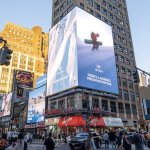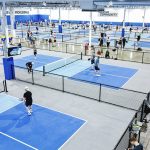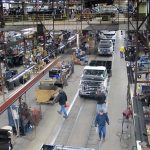The Stanford Graduate School of Business christened its new home, the Knight Management Center, at a lively April 29 ceremony. The event marked the end of a three-year building project that produced a facility that will enable the business school to move forward and grow in the areas of curriculum and innovation.
Philip H. Knight, who earned his MBA at the school in 1962 and for whom
the Knight Management Center is named, said that in the coming decade
the school will redefine management. “People come up to Penny [his wife]
and me to thank us for making this possible,” Knight said. “I tell them
it is an honor for us to be associated with a special institution.”
Knight wrote his business plan for Nike in a small business class at the
school taught by the late Professor Frank Shallenberger.
“Were now able to turn the physical spaces that have been created here into intellectual learning places,” Graduate School of Business Dean Garth Saloner said of the 8 new buildings on the 12.5-acre site.
Six hundred banners bearing words and phrases meant to inspire change, written by members of the GSB and Stanford communities, flowed from the new buildings. The banners echoed the business school’s slogan: Change lives. Change organizations. Change the world. Visitors also had the chance to contribute their words of change on banners that can be seen online and will be displayed in the future.
Stanford President John Hennessy thanked the donors, many of whom were present at the dedication ceremony, for the new center, “which is not only a gift for students today, who have already fallen in love with the place, but a gift for students of the future.”
Thousands of visitors, alumni, and members of the Stanford community toured the 8 buildings after the dedication ceremony and had the opportunity to see some of the 100 classrooms of various sizes that enable teaching a new curriculum in flexible learning spaces.
The green features of the sustainably designed center, which is seeking a LEED Platinum® rating for environmental sustainability from the U.S. Green Building Council, were visible during the open house, including the roof-mounted photovoltaic panels; the long, narrow buildings that allow more natural light in; and the 870-space underground parking structure that eliminates the “heat-island effect” of traditional uncovered parking lots.














